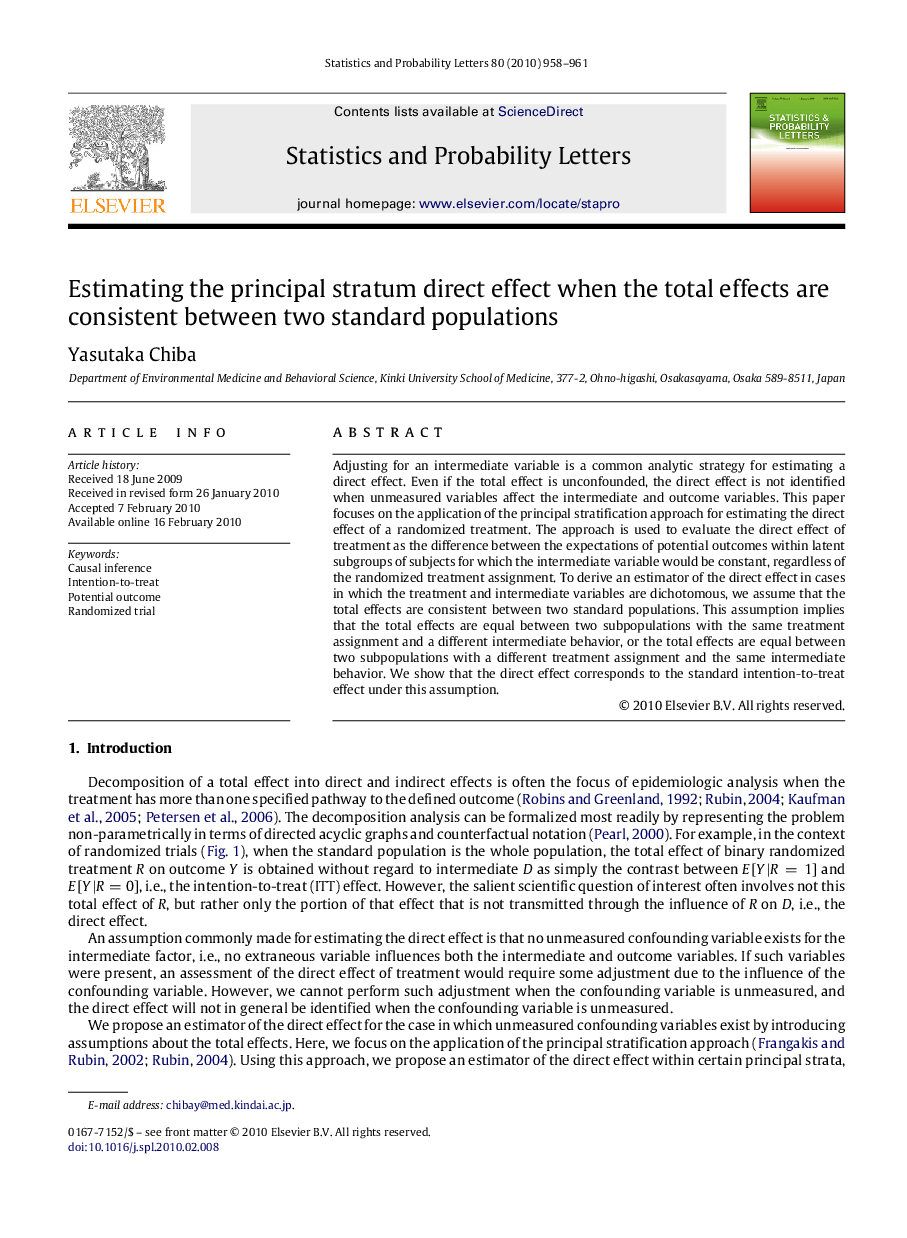| Article ID | Journal | Published Year | Pages | File Type |
|---|---|---|---|---|
| 1153235 | Statistics & Probability Letters | 2010 | 4 Pages |
Adjusting for an intermediate variable is a common analytic strategy for estimating a direct effect. Even if the total effect is unconfounded, the direct effect is not identified when unmeasured variables affect the intermediate and outcome variables. This paper focuses on the application of the principal stratification approach for estimating the direct effect of a randomized treatment. The approach is used to evaluate the direct effect of treatment as the difference between the expectations of potential outcomes within latent subgroups of subjects for which the intermediate variable would be constant, regardless of the randomized treatment assignment. To derive an estimator of the direct effect in cases in which the treatment and intermediate variables are dichotomous, we assume that the total effects are consistent between two standard populations. This assumption implies that the total effects are equal between two subpopulations with the same treatment assignment and a different intermediate behavior, or the total effects are equal between two subpopulations with a different treatment assignment and the same intermediate behavior. We show that the direct effect corresponds to the standard intention-to-treat effect under this assumption.
